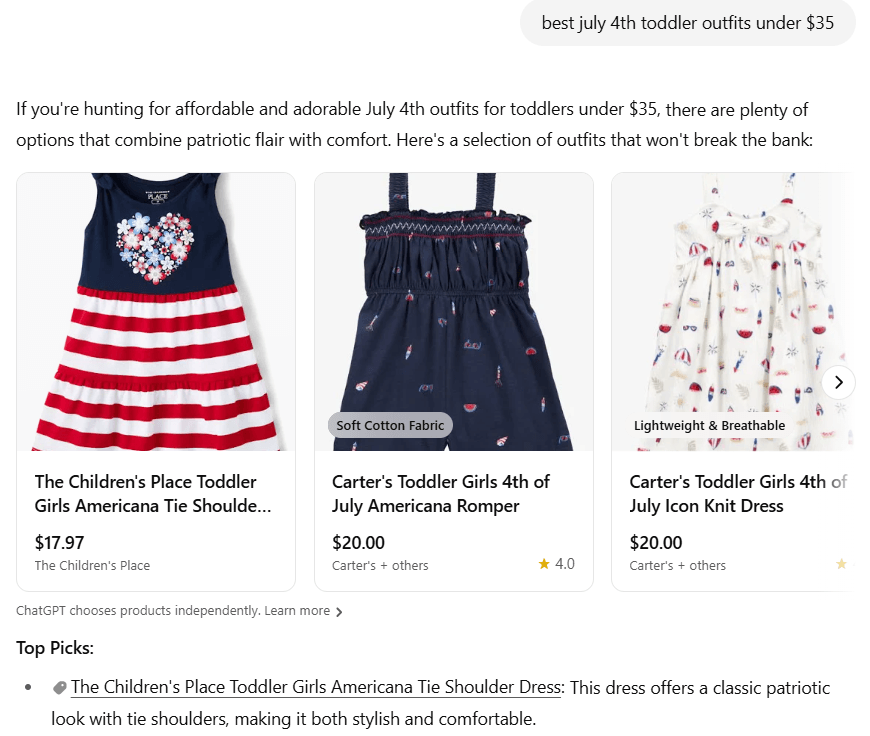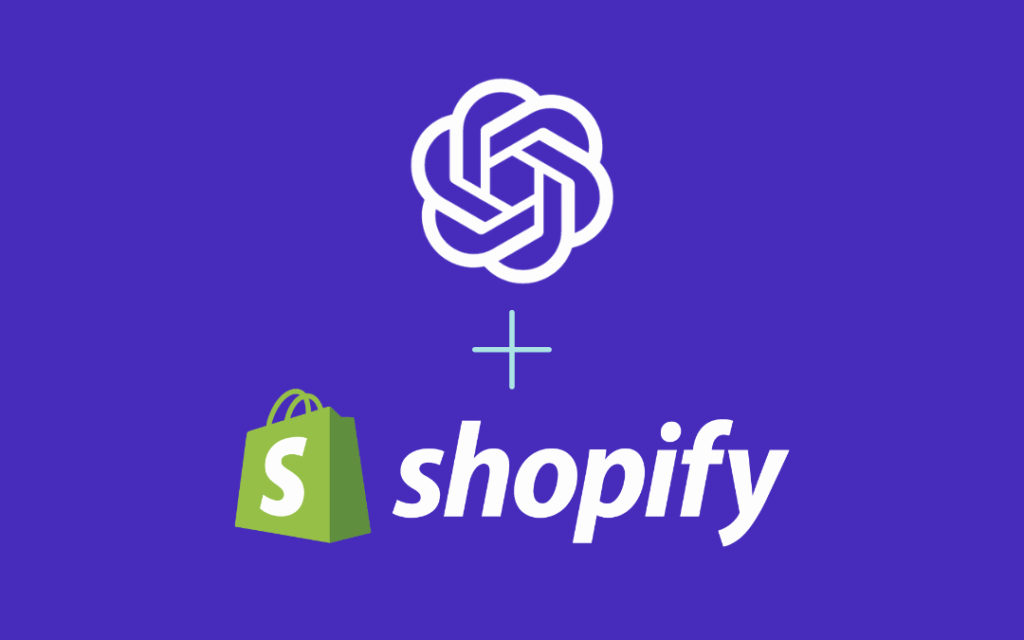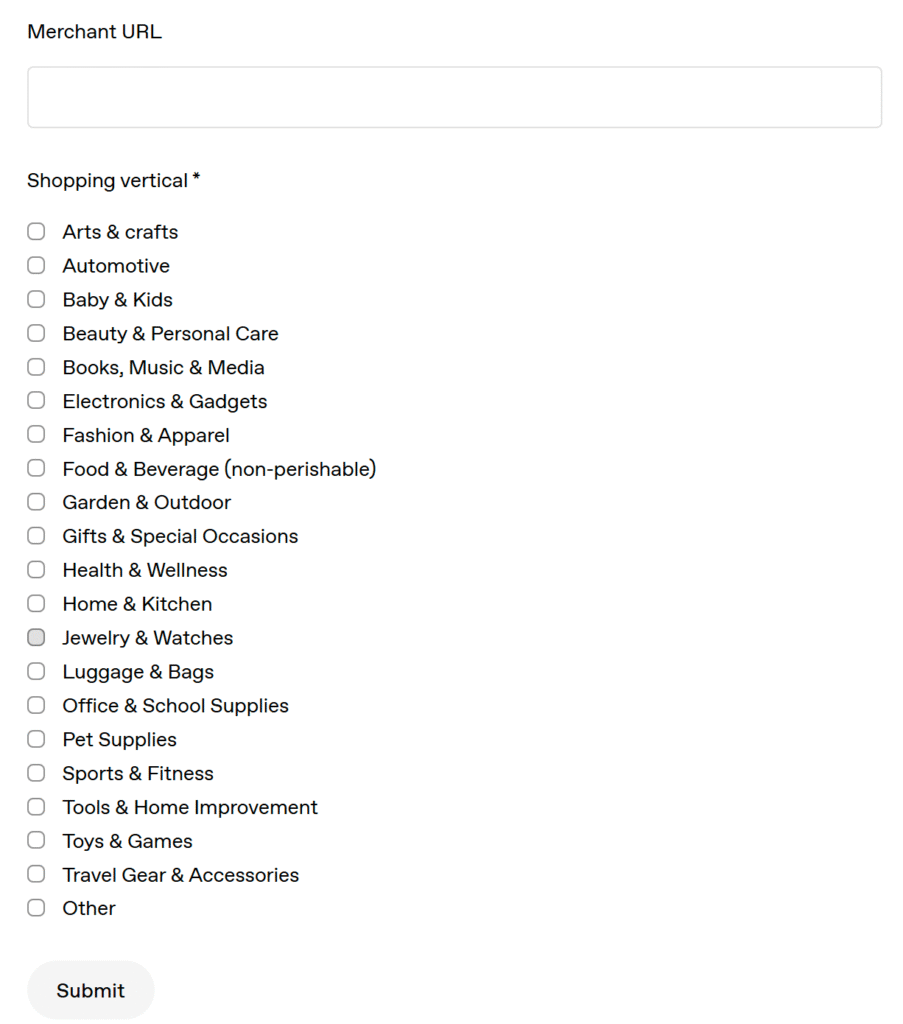Through practice, we’ve found that more and more users are shifting from traditional search engines to AI assistants like ChatGPT for shopping advice.
OpenAI has introduced AI-powered shopping recommendations in ChatGPT! This new “conversational shopping” experience is gradually changing consumer behavior. At the same time, it opens up a new revenue channel for e-commerce businesses. Whoever can get their brand to appear more in the results returned to users by ChatGPT will undoubtedly get more traffic and conversion opportunities.
If you’re running an online store, now is the time to understand the logic and strategies behind how ChatGPT recommends products, ensuring you secure your spot early.
Read this ultimate guide to learn how to get your e-commerce products listed in ChatGPT search results.
Ⅰ. The Search Paradigm Is Changing
For over a decade, search engines like Google and Bing have dominated as the starting point for online shopping. But with the rapid spread of generative AI, this entry point is shifting.
Key differences between “AI search” and traditional search:
- Conversational interaction: Users ask questions in natural language without needing precise keywords.
- Integrated recommendations: AI combines search data and its knowledge base to generate structured product lists directly.
- Shorter conversion path: From question to recommendation to purchase—just one click is needed.
For consumers, AI provides a more efficient and personalized shopping decision process, which is the trend of the future. For independent sellers, AI assistants are becoming another traffic source, following platform search and social media.
Ⅱ. What is ChatGPT Shopping?
Ever since generative chatbots emerged, users have been asking them all kinds of questions. Among them, researching and buying products has become increasingly common.
When a user’s query suggests shopping intent (e.g., “recommend a summer dress” or “find me Bluetooth headphones under $50”), ChatGPT pulls from search data and connected e-commerce platforms to generate product suggestions within the chat.
Results are displayed as a visual carousel with links to product pages. Research shows both GPT-4o and 4o-mini offer this feature.

This not only saves users time on searching and comparing but also significantly improves conversion rates for AI-suggested products.
Ⅲ. Why Is It Important?
AI assistants are not just replacing search engines—they’re becoming a new traffic and sales entry point. You can’t ignore their importance, and here’s why:
·Users trust AI recommendations more than ads
In ChatGPT, users perceive recommendations as “smart judgments based on their needs,” not as paid advertisements. This creates higher trust and click-through rates.
The products are indeed independently selected by ChatGPT and are not paid advertisements!
·More precise matching mechanism
AI recommends based on the user’s specific context, not just keyword matching. This means products that closely match user intent in terms of structured data and descriptions are more likely to be selected.
·Early entry wins visibility
The AI shopping recommendation ecosystem is still in its early stages, with relatively low competition. Optimizing your product data and structure now can give you a head start.
·Shorter conversion path
After seeing a recommendation in ChatGPT, users can click directly to purchase, eliminating multiple search steps and boosting conversion rates.

Ⅳ. How Does ChatGPT Select Which Products to Display?
Currently, ChatGPT’s product display mechanism differs from traditional e-commerce platforms. It doesn’t rely on “bid rankings” or “sales charts,” but instead considers the following dimensions:
1. User Intent Match
When ChatGPT deems a product relevant to the user’s intent, it appears in the visual carousel.
- Core intent: Keywords in the user’s query
- Personalized intent: Contextual clues (like memory or custom instructions)
For example, if a user asks ChatGPT to find a Christmas outfit for their dog, it considers specifics like color, material, and size. If the user previously stated they dislike fiber fabrics, ChatGPT may exclude such products.
Based on user needs, factors like price, return policy, and shipping cost may vary in importance. For example, if the budget is $50, ChatGPT will prioritize price. If price doesn’t matter, it may focus on other features.
It’s worth noting that, unlike traditional platforms, ChatGPT doesn’t rank sellers based on price, shipping, or return policy.
2. Structured Product Metadata
Structured metadata from third-party providers, such as prices, product descriptions, etc.
If your product feed contains complete, structured information, it’s more likely to be crawled and displayed by AI. Prioritize showcasing from trusted platforms such as Shopify.
3. Third-party Tags and Review Summaries
ChatGPT may generate simplified titles and descriptions from third-party data, including:
- Tags used by sellers, such as “budget-friendly” or “most popular”
- Review summaries from public sites, highlighting common user preferences. Some may include star ratings and review counts. Users can click links to view the source.
Pay Attention, Tags and reviews are not verified guarantees and may not reflect all available market data. Reviews and ratings are not validated by OpenAI.
4. Other
- ChatGPT generates model responses before considering new search results.
- OpenAI Safety Standards.
Ⅴ. 💡Strategies to Get Your Product Listed in ChatGPT
Now for the most practical part: What can you do to help your products appear in ChatGPT? Here are specific, partner-validated strategies worth trying:
1. Ensure Your Site Is Discoverable by ChatGPT
ChatGPT uses the OAI-SearchBot crawler to discover, access, and display info in ChatGPT search. Make sure you’re not blocking it, or your products won’t appear.
Check your robots.txt file. The following allows access to OAI-SearchBot:

Two quick tips:
- ChatGPT adds “
utm_source=chatgpt.com“Outbound links to help track inbound traffic for analysis. - OAI-SearchBot is used only for search purposes, not for training OpenAI models.
2. Connect to supported platforms
Currently, Shopify is a primary source of product data for ChatGPT. To sync products:
- Use Shopify’s official “Product Feed” plugins (like Klarna or Criteo) to standardize uploads.
- Ensure every product has all fields completed.
- Keep data up to date with each new listing to avoid outdated information.
3. Submit product information directly to ChatGPT
To improve accuracy and freshness, ChatGPT is exploring ways for merchants to submit product feeds directly. Try filling out the interest form on their website and waiting for approval.

4. Optimize product schema markup
- Structured metadata is critical to visibility in ChatGPT results.
- Use JSON-LD format to provide details like title, price, brand, inventory, image, and reviews
- Validate using Google’s Structured Data Testing Tool
5. Improve product content structure
AI is highly sensitive to natural language. Tips include:
- Use clear, concise titles (e.g., “Men’s Running Shoes – Lightweight & Breathable”)
- Naturally, include keywords that users might search for
- Add reviews, FAQs, and supporting content to enrich context
6. E-commerce SEO
While ChatGPT doesn’t rely entirely on SEO, higher-ranking pages are easier to crawl and cite. Optimize titles, descriptions, tags, load speed, and mobile responsiveness.
7. Optimize product visuals
Product images often appear in ChatGPT recommendations. Use high-quality visuals that highlight key features. Recommended formats: JPEG/WEBP, with alt text and image schema tags.
Conclusion
In future shopping scenarios, conversational interaction will become the norm. Instead of searching for information, users will directly request answers.
Chatbots like ChatGPT are becoming the next growth engine for e-commerce. Whether your store gets visibility at this entry point will determine if your brand can seize the next wave of opportunity.
The earlier you invest in AI Optimization (AIO), the better your competitive position. Now is the best time to start!
FAQ
1. Does ChatGPT charge for product recommendations?
Currently, no. ChatGPT does not charge for recommendations. As long as your product info is high quality and compliant, it has a chance to be featured.
2. Is there a “ranking” system for product display in ChatGPT?
No traditional ad ranking exists. Display results depend on how well the user’s intent matches your product info.
3. Will ChatGPT show all my products?
No. Only products that match the user’s query and have complete information may be selected.
4. How can I know if my product was featured?
OpenAI has not yet released a merchant dashboard. The feature is currently available to all users with browsing enabled (GPT-4-turbo). Cross-platform visibility is expected to expand in future updates.




